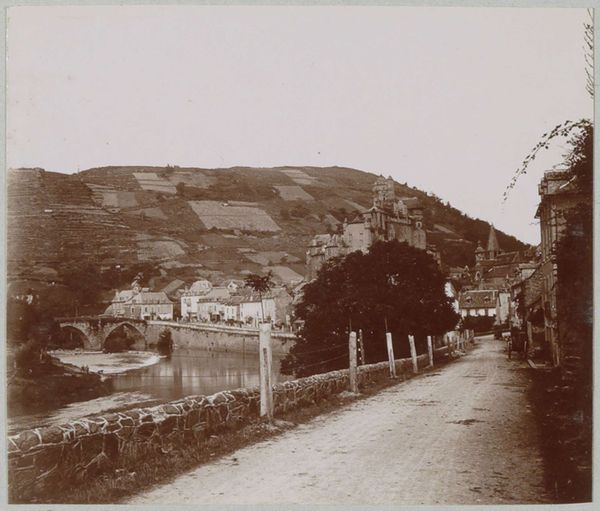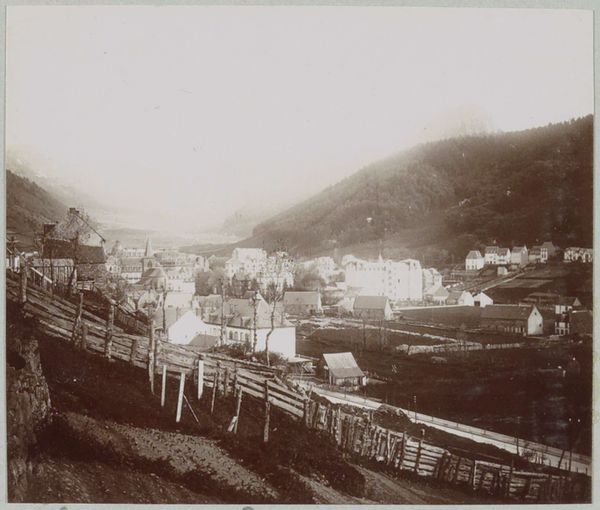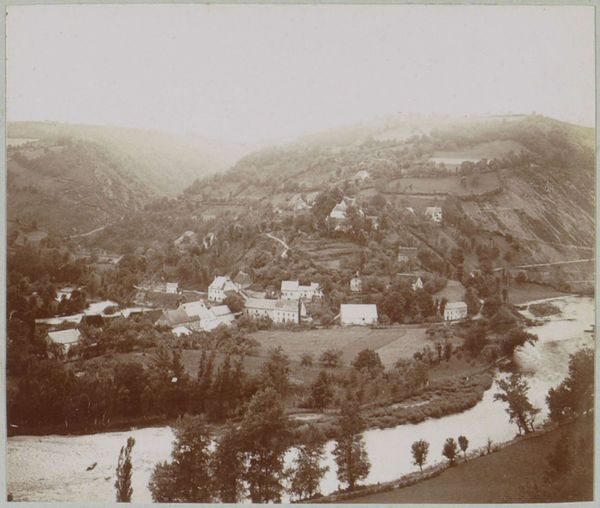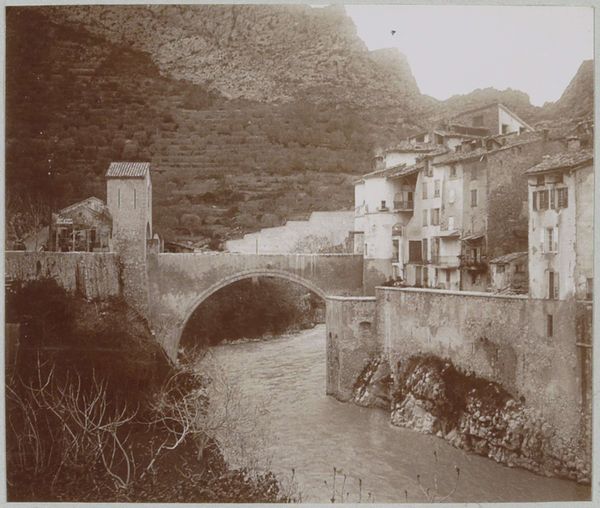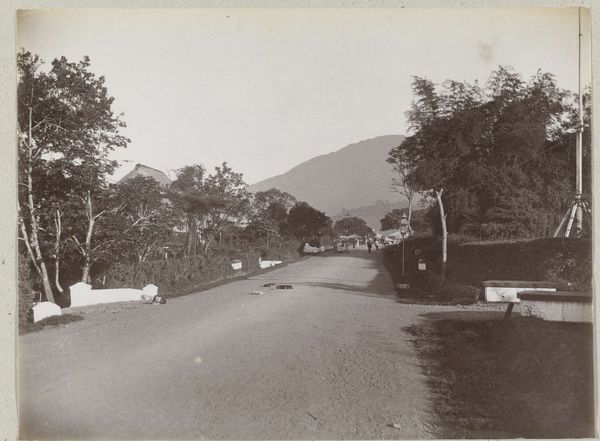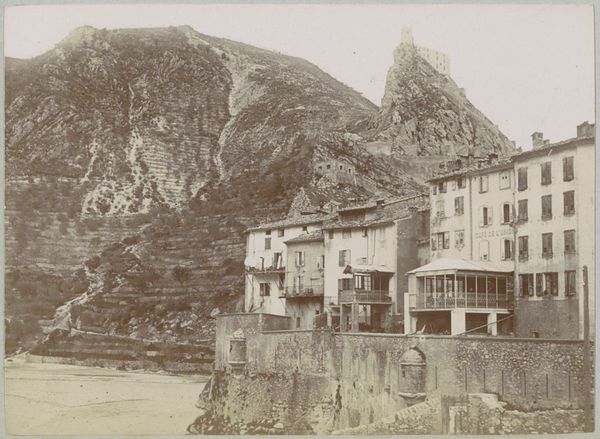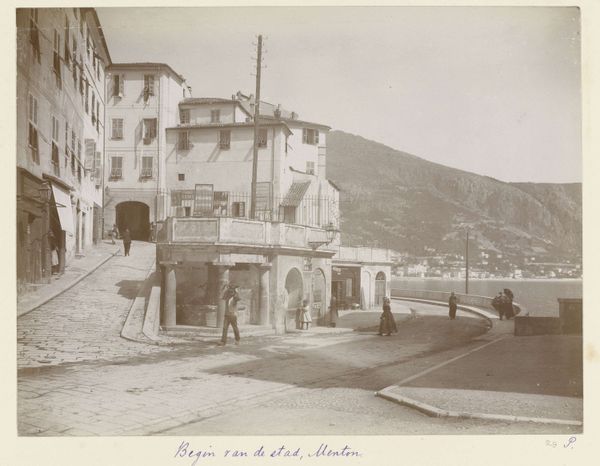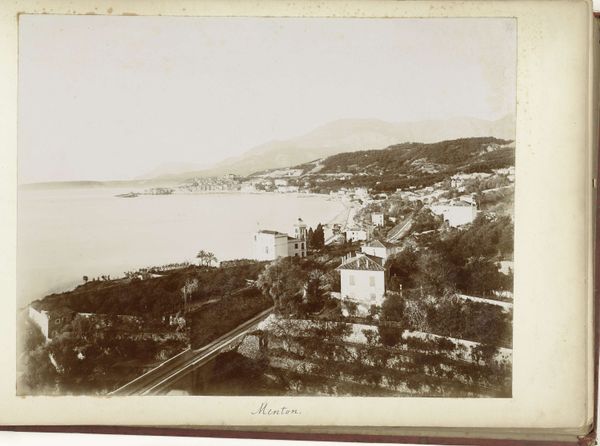
Landweg met kinderen en ossenkar, op de achtergrond een dorp, vermoedelijk in Spaans Baskenland 1904
0:00
0:00
plein-air, photography
#
plein-air
#
landscape
#
photography
#
genre-painting
#
realism
Dimensions: height 69 mm, width 83 mm
Copyright: Rijks Museum: Open Domain
Editor: This is a photograph from 1904, titled "Landweg met kinderen en ossenkar, op de achtergrond een dorp, vermoedelijk in Spaans Baskenland," housed at the Rijksmuseum. It depicts a rural scene, and what strikes me is its seemingly unvarnished portrayal of everyday life. What do you see in this piece? Curator: It's interesting how this image engages with Realism. Notice how photography, as a medium, at the turn of the century, increasingly took on the role of documenting the world 'as it is,' often with the implication of capturing a 'truthful' depiction of labor, class, and region. We should ask: who is being represented here, and for whom? Is this meant to be a neutral observation, or does it participate in constructing a certain image of the Spanish Basque Country for a specific audience? Editor: That's fascinating! I hadn't considered the role of the intended audience in shaping the image. Could the fact that it's in the Rijksmuseum imply a specific Dutch perspective? Curator: Exactly! Consider the institutional framework: What does it mean for this photograph to be part of a Dutch collection? The Rijksmuseum’s acquisition of this image signals a particular interest, perhaps tied to colonial perspectives, tourism, or a fascination with 'foreign' cultures. This prompts us to question the politics of representation. Is this a celebration of rural life, or an observation colored by external views? Editor: So, it's not just a simple snapshot, but a statement about cultural perceptions. It definitely makes you think about how even seemingly objective images are laden with perspective and power dynamics. Curator: Precisely. Analyzing the photograph within the social and institutional context reveals how even documentary images participate in broader narratives and reinforce certain viewpoints. This makes appreciating the artwork's cultural history much more engaging!
Comments
No comments
Be the first to comment and join the conversation on the ultimate creative platform.

